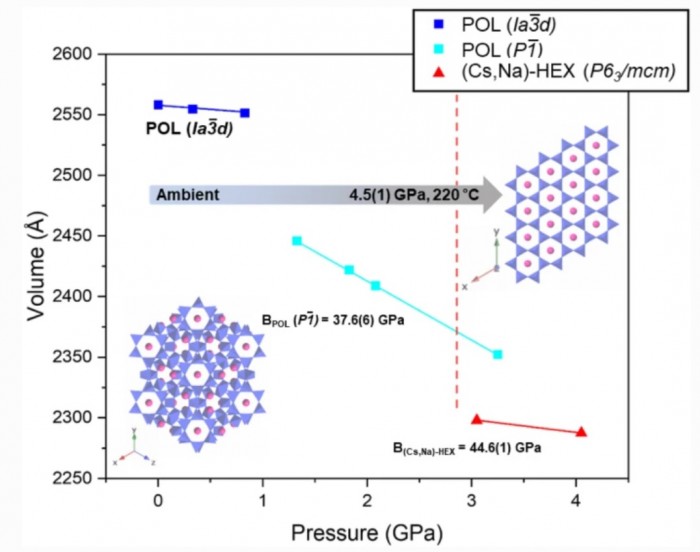“Transformation of natural pollucite into hexacelsian under high pressure and temperature”
- Authors
W. Choi, J. Choi, H. Hwang, and Y Lee*
- Journal
Physics and Chemistry of Minerals
Vol.49:15, 2022.05 - DOI
Abstract
Synchrotron X-ray powder diffraction experiments were performed on natural pollucite to observe its transition into hexacelsian-like phase at high pressure and temperature conditions under water pressure medium. When heated to 100 °C at 1.3(1) GPa, the natural cubic pollucite, (Cs, Na)16Al16Si16O96 (Ia3 ¯ d), transformed to its triclinic phase (P1 ¯) with discontinuous unit cell volume contraction by ca. 4.4%. After further compression to 4.1(1) GPa and heating up to 250 °C, a new hexagonal phase with a hexacelsian framework, Cs1.28(1)Na0.44(1)Al1.72(1)Si6.28(1)O16 (P63/mcm, (Cs, Na)-HEX), formed with unit cell volume contraction by ca. 6.1% based on 96 oxygen atoms of the framework (Of). The structural model of the newly formed hexacelsian-like phase, (Cs, Na)-HEX, was refined by the Rietveld method to show the disordered distribution of cesium and sodium cations between the double six-membered rings (D6R). Further details of the (Cs, Na)-HEX model are compared to those of the natural Ba-hexacelsian (Ba-HEX) and synthetic Cs-hexacelsian (Cs-HEX).












